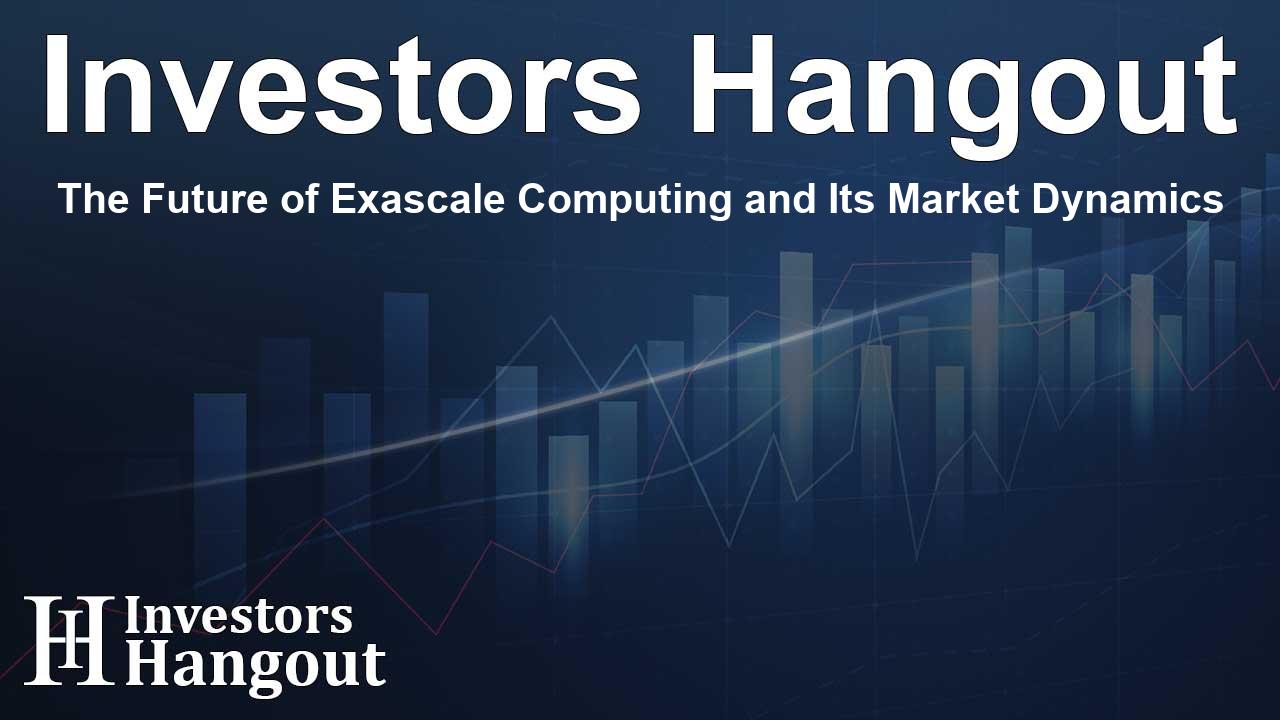The Future of Exascale Computing and Its Market Dynamics

Exascale Computing Market Insights and Projections
Exascale computing is emerging as a transformative force across various sectors, signifying a remarkable leap in the capabilities of high-performance computing (HPC). The market, valued at USD 3.47 billion in 2023, is anticipated to soar to USD 29.58 billion by 2032, reflecting a compound annual growth rate (CAGR) of 26.96% from 2024 to 2032. This growth trajectory highlights the increasing demand for advanced computing systems in critical areas such as artificial intelligence, healthcare, and defense.
Market Dynamics Driving Growth
The primary driving force behind the growing Exascale Computing Market is the surging necessity for high-performance computing (HPC). Industries are witnessing an upsurge in the adoption of exascale technologies due to their immense capabilities in processing vast amounts of data swiftly and efficiently. This is particularly crucial in sectors like healthcare, where rapid data analysis can lead to breakthroughs in treatment and patient care.
The Role of AI and Healthcare
Artificial intelligence (AI) is reshaping how organizations approach problem-solving. In sectors such as healthcare, AI models rely heavily on HPC to analyze large datasets for drug discovery and disease modeling. The increasing convergence of HPC and AI technologies creates a robust ecosystem that fosters rapid innovation and enhances operational efficiency.
Defense Sector's Influence
Exascale computing is also witnessing significant interest in the defense sector, where the demand for sophisticated simulations and real-time data processing is paramount. Government agencies are continually investing in technologies that can enhance national security and improve military capabilities. This sector is projected to maintain a leading position within the overall Exascale computing landscape, driven by continual investments.
Industry Applications and Hardware Advancements
The supercomputing landscape encompasses a diverse range of applications. The U.S. exascale computing market alone is forecasted to expand from USD 0.89 billion in 2023 to USD 7.53 billion by 2032. This growth is bolstered by strategic national investments aimed at advancing high-performance processing technologies that cater to both military and scientific endeavors.
Hardware plays a crucial role in this sector, with enterprises investing heavily in systems designed to optimize computational performance. The hardware segment accounted for 54% of the exascale market, indicating a robust focus on developing top-tier scientific computing solutions. Companies like Hewlett Packard Enterprise, IBM, and NVIDIA are at the forefront, continuously innovating to meet market demands.
Cloud vs. On-Premises Deployment
Within the deployment strategies, the on-premises sector holds considerable prominence, capturing 55% of the market share. This approach is critical for sectors requiring stringent security measures, such as government and defense organizations. However, cloud-based exascale solutions are gaining traction, driven by a growing need for scalability and cost-effectiveness. The flexibility provided by cloud services offers organizations a robust alternative while reducing infrastructure costs.
Regional Market Dynamics
North America currently leads the Exascale Computing Market, contributing to 36% of the revenue share. The region's dominance is attributed to aggressive government investment in HPC technologies, particularly for defense and space exploration initiatives. As we look east, the Asia-Pacific region is poised for remarkable growth, with predictions of a CAGR of 29.76% from 2024 to 2032. Countries like China, Japan, and India are ramping up their R&D investments, contributing significantly to the evolving landscape of exascale computing.
Recent Technological Developments
Noteworthy advancements continue to surface in the exascale computing domain. For instance, in recent innovations, Hewlett Packard Enterprise unveiled El Capitan, recognized as the world’s fastest supercomputer, achieving astonishing performance metrics. Similarly, NVIDIA's latest offerings are revolutionizing the efficiency of AI computations, reflecting a growing trend toward more powerful and energy-efficient technologies.
Frequently Asked Questions
What is the current size of the Exascale Computing market?
The Exascale Computing market was valued at USD 3.47 billion in 2023.
What factors are driving the growth of Exascale Computing?
The growth is primarily driven by the increasing need for high-performance computing across various sectors, including healthcare, defense, and research.
How does high-performance computing impact healthcare?
High-performance computing enables faster data analysis and significant advancements in medical research, enhancing patient care and treatment outcomes.
What is the expected market size by 2032?
The market is projected to reach USD 29.58 billion by 2032.
Which regions are leading in Exascale Computing adoption?
North America currently leads the market, while the Asia-Pacific region is expected to witness the fastest growth.
About The Author
Contact Addison Perry privately here. Or send an email with ATTN: Addison Perry as the subject to contact@investorshangout.com.
About Investors Hangout
Investors Hangout is a leading online stock forum for financial discussion and learning, offering a wide range of free tools and resources. It draws in traders of all levels, who exchange market knowledge, investigate trading tactics, and keep an eye on industry developments in real time. Featuring financial articles, stock message boards, quotes, charts, company profiles, and live news updates. Through cooperative learning and a wealth of informational resources, it helps users from novices creating their first portfolios to experts honing their techniques. Join Investors Hangout today: https://investorshangout.com/
The content of this article is based on factual, publicly available information and does not represent legal, financial, or investment advice. Investors Hangout does not offer financial advice, and the author is not a licensed financial advisor. Consult a qualified advisor before making any financial or investment decisions based on this article. This article should not be considered advice to purchase, sell, or hold any securities or other investments. If any of the material provided here is inaccurate, please contact us for corrections.
